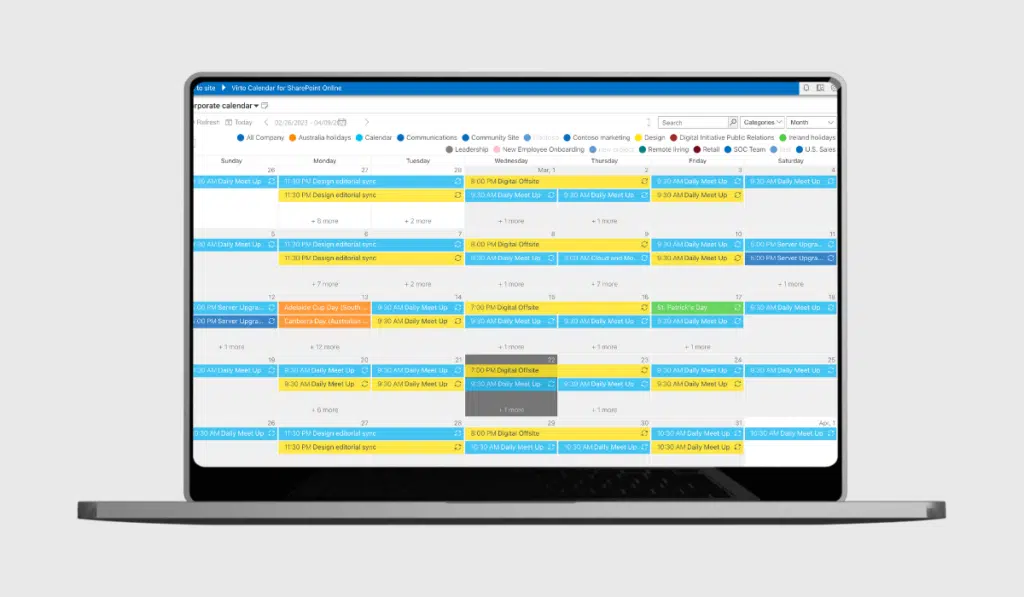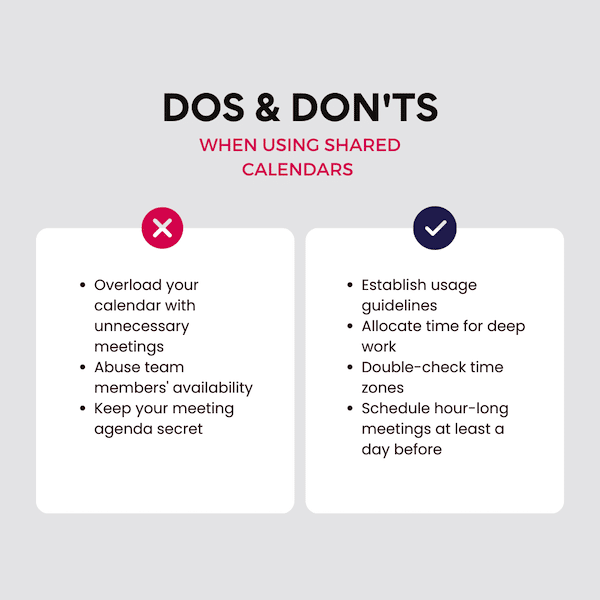Mastering Shared Outlook Calendars: A Complete Information for Groups of All Sizes
Associated Articles: Mastering Shared Outlook Calendars: A Complete Information for Groups of All Sizes
Introduction
With nice pleasure, we’ll discover the intriguing matter associated to Mastering Shared Outlook Calendars: A Complete Information for Groups of All Sizes. Let’s weave fascinating data and provide contemporary views to the readers.
Desk of Content material
Mastering Shared Outlook Calendars: A Complete Information for Groups of All Sizes

In in the present day’s interconnected world, efficient time administration and collaboration are paramount. For groups and organizations, sustaining a transparent, shared view of schedules is essential for mission success, environment friendly useful resource allocation, and streamlined communication. Microsoft Outlook, a ubiquitous productiveness instrument, gives sturdy calendar options, together with the flexibility to create and handle shared calendars. This complete information explores the intricacies of making and using shared Outlook calendars, addressing frequent challenges and providing greatest practices for groups of all sizes, even these with lots of of customers.
Understanding the Energy of Shared Calendars:
Earlier than diving into the technical elements, let’s perceive the advantages of using shared calendars:
- Improved Scheduling & Collaboration: Eliminates the back-and-forth emails when scheduling conferences, appointments, or assets. Everybody can see real-time availability.
- Enhanced Group Coordination: Facilitates higher mission planning and execution by offering a centralized view of workforce members’ commitments.
- Useful resource Administration: Streamlines the reserving of shared assets like assembly rooms, gear, or personnel.
- Lowered Conflicts: Minimizes scheduling conflicts by offering a transparent overview of everybody’s commitments.
- Elevated Transparency: Promotes transparency and accountability throughout the workforce.
- Simplified Communication: Reduces the necessity for fixed updates and reminders concerning schedules.
Making a Shared Calendar in Outlook:
The method of making a shared calendar in Outlook is comparatively easy, however the optimum method varies based mostly in your wants and the dimensions of your workforce.
Methodology 1: Sharing an Present Calendar:
That is the best methodology if you have already got a calendar you wish to share.
- Open Outlook: Launch your Microsoft Outlook utility.
- Navigate to Calendar: Click on on the "Calendar" tab within the navigation pane.
- Proper-Click on the Calendar: Proper-click on the calendar you want to share.
- Choose "Share": Select the "Share" possibility from the context menu.
-
Add Permissions: A "Sharing" window will seem. Right here, you may add the e-mail addresses of the individuals you wish to share the calendar with. Select the suitable permission degree:
- Reviewer: Can solely view the calendar.
- Editor: Can view and modify appointments (add, delete, edit).
- Proprietor: Has full management over the calendar, together with sharing permissions.
- Ship the Invitation: Click on "Ship" to ship an e mail invitation to the recipients. They might want to settle for the invitation to entry the shared calendar.
Methodology 2: Making a Devoted Shared Calendar:
For bigger groups or extra complicated scheduling wants, making a devoted shared calendar is commonly extra environment friendly.
- Create a New Calendar: In your Outlook calendar, click on "House" -> "New Calendar."
- Title the Calendar: Give the calendar a descriptive identify, similar to "Group Conferences" or "Challenge X Schedule."
- Share the Calendar: Comply with steps 4-6 from Methodology 1 to share the newly created calendar with the suitable people.
Managing Permissions and Entry:
Efficient administration of permissions is essential for sustaining order and safety. Contemplate the next:
- Granular Permissions: Assign permissions based mostly on particular person roles and tasks. Not everybody wants full modifying entry.
- Common Critiques: Periodically overview and modify permissions as workforce buildings and tasks change.
- Delegation: For bigger calendars, contemplate delegating administration tasks to particular people.
- Password Safety (for delicate information): Whereas circuitously a characteristic of calendar sharing, contemplate password-protecting delicate data inside appointments themselves if essential.
Finest Practices for Massive Groups (100+ customers):
Managing shared calendars for big groups presents distinctive challenges. Contemplate these greatest practices:
- Devoted Calendar Directors: Assign devoted people to handle and preserve the shared calendar(s).
- Categorization & Coloration-Coding: Use classes and color-coding to visually differentiate occasions and appointments.
- Clear Naming Conventions: Set up a transparent naming conference for occasions and appointments to make sure consistency.
- Common Calendar Cleanups: Often take away outdated or irrelevant occasions to keep up readability.
- Useful resource Calendars: Create separate calendars for shared assets (assembly rooms, gear) to keep away from conflicts.
- Outlook Teams & Distribution Lists: Leverage Outlook teams and distribution lists to simplify the method of sharing calendars with giant numbers of individuals.
- Contemplate Different Options: For terribly giant groups or complicated scheduling wants, contemplate devoted scheduling software program or calendar integration with mission administration instruments. Outlook may not be essentially the most environment friendly resolution in these situations.
Troubleshooting Frequent Points:
- Calendar Not Showing: Make sure the recipient has accepted the sharing invitation and that their Outlook is correctly configured.
- Permission Points: Confirm that the proper permissions have been assigned.
- Synchronization Issues: Verify your web connection and guarantee Outlook is correctly configured to synchronize calendars.
- Conflicting Appointments: Implement clear communication protocols and make the most of useful resource calendars to stop conflicts.
Integrating with Different Instruments:
The ability of Outlook’s shared calendar extends past its standalone capabilities. Integration with different instruments can considerably improve productiveness:
- Microsoft Groups: Combine your shared calendar with Microsoft Groups for seamless collaboration and communication.
- Challenge Administration Software program: Join your shared calendar with mission administration instruments like Microsoft Challenge or Asana to visualise mission timelines and schedules.
- Third-Get together Calendar Apps: Discover third-party calendar purposes that provide superior options and integrations.
Conclusion:
Mastering shared Outlook calendars is a vital ability for groups of all sizes. By understanding the options, implementing greatest practices, and addressing potential challenges proactively, you may unlock the total potential of collaborative scheduling and considerably enhance workforce effectivity and productiveness. Do not forget that the important thing to success lies in cautious planning, clear communication, and constant upkeep of your shared calendars. From small groups to giant organizations, a well-managed shared calendar is a useful asset within the pursuit of streamlined workflows and enhanced collaboration.








Closure
Thus, we hope this text has offered helpful insights into Mastering Shared Outlook Calendars: A Complete Information for Groups of All Sizes. We thanks for taking the time to learn this text. See you in our subsequent article!